The Shaggy Mane Mushroom – Everything You Need To Know
It’s easy to identify, it grows all over the place, and just happens to be a choice gourmet edible.
In this article, I wanted to share some fun facts and hopefully answer some of your questions about one of my favorite mushrooms to find in the wild, the Shaggy Mane- otherwise known as Coprinus comatus.
The Shaggy Mane is a very common wild mushroom that you can often find growing in parks, on lawns, and at the sides of trails in disturbed soil.
It is super easy to identify and once you get a feel for it, it is instantly recognizable, making it a perfect species for beginners.
Of course, as with any mushroom, you need to be 100% sure of a mushroom’s identification if you plan on eating it or serving it to others.
What Does It Look Like?
The Shaggy Mane gets its name because the cap actually does have a “shaggy” appearance.
Another common name is “lawyers wig” and in fact, the Latin name “comatus” is derived from “coma” which means hair.
When young, the fruiting body is cylindrical in shape, and stands tall out of the ground – almost like a hairy oblong egg on the end of a smooth, much thinner stalk. When cutting open a young species, the gills are initially white, and tightly packed together.
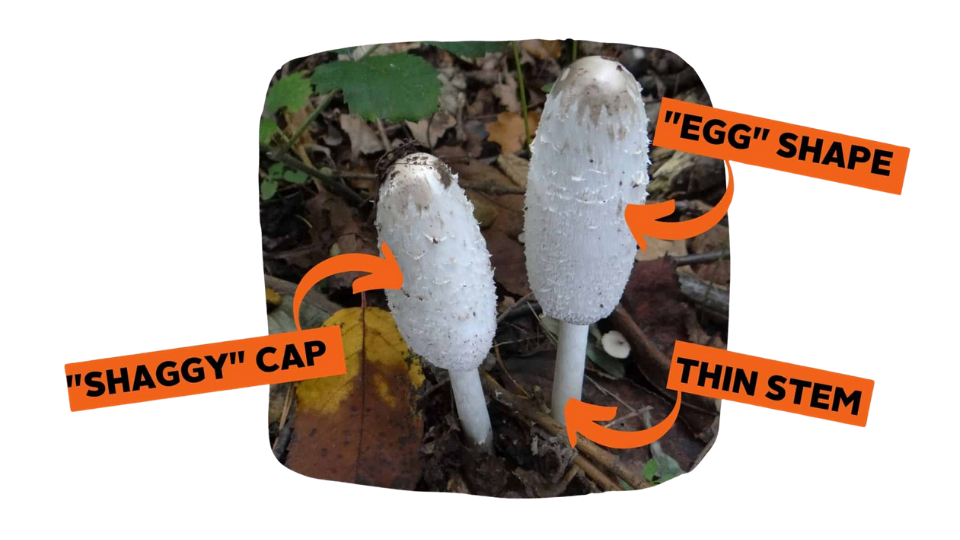
As it ages, the mushroom takes on a much different appearance. Species of the “coprinus” genus are known as “inky caps” because of a special auto-digestion feature, where the fruiting body slowly degrades into a gooey black ink.
This is also known as deliquescing.
The mushroom has a good reason for this “self destruction”.
When the fruiting body is young, the gills are tightly packed together, not ideal for dispersing spores.
This auto-digestion of the cap starts from the bottom of the gills, and works its way up, causing the cap to curl up, the gills to open, and the spores to be dispersed.
Some spores are also dropped to the ground with the ink.
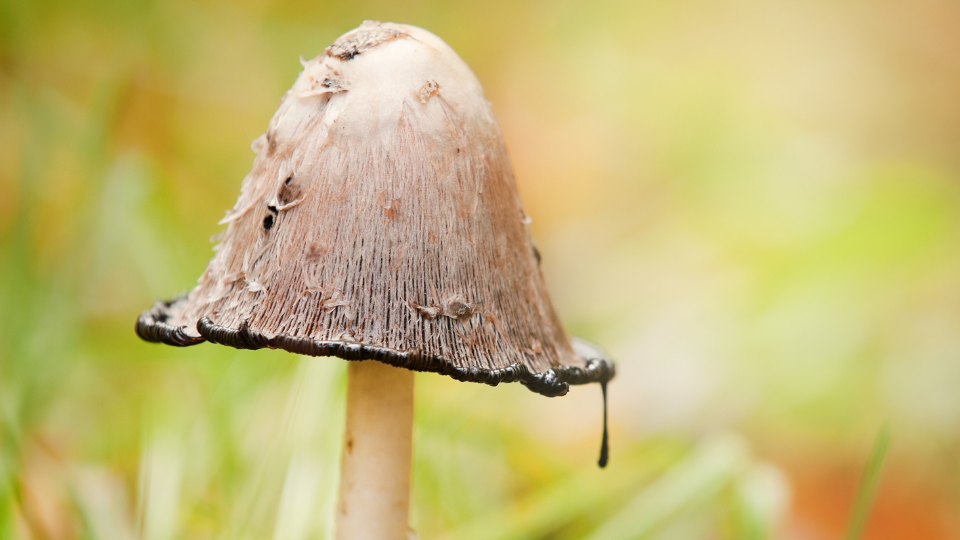
Where Can You Find Shaggy Mane?
Shaggy Mane can often be found growing in rich soils and grass in the summer and fall.
It also seems to like disturbed soils near trails and roads.
So if you want to find this mushroom, keep your eyes open around golf courses, city parks, front lawns and trail-sides.
It can grow singly, but most often fruits in large groups, so if you find one, you are likely to find a whole bunch of them.
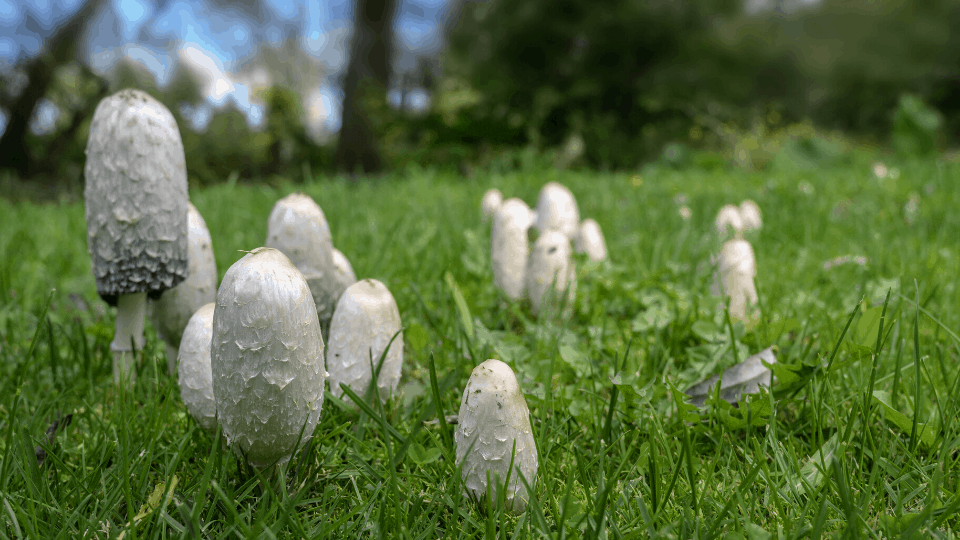
Is It Shaggy Mane Edible?
As mentioned before, Shaggy Mane is considered a gourmet edible, and is a favorite among mushroom hunters.
Because of its auto-destruct mechanism, this mushroom is best enjoyed when young, long before the cap starts to separate and turn into ink.
Even after harvesting, it is best if used right away, as it won’t stay good for very long after harvest.
Shaggy Mane can be preserved by dehydration, which is why you can actually find a dried version in some supermarkets.
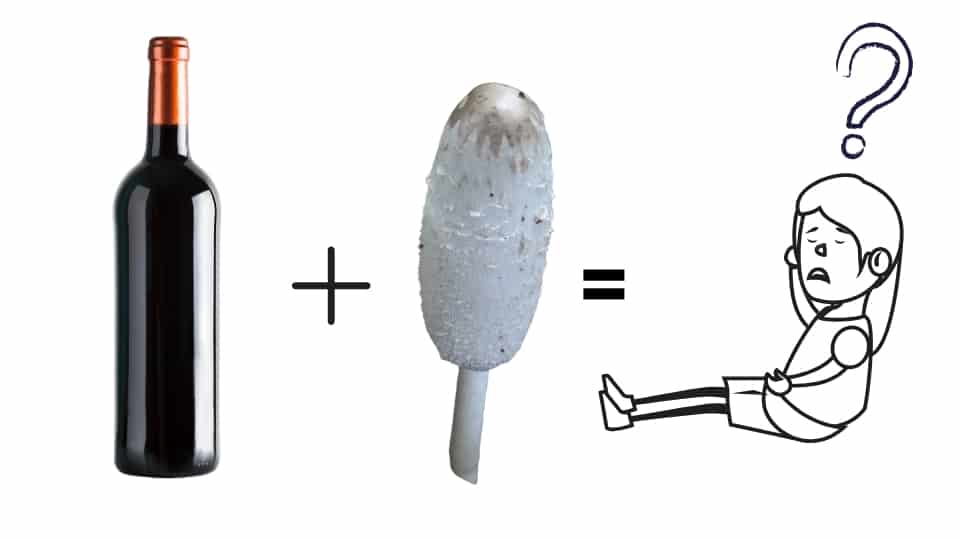
Can Shaggy Mane Be Consumed With Alcohol?
A lot of people think that you should never consume this mushroom with alcohol, because of potential interactions between alcohol and compounds in the mushroom that can cause serious illness.
Although this is true for other Coprinus species, it is not necessarily true with Shaggy Mane (coprinus comatus)
This confusion stems from the fact that the common inky cap also known as “coprinus atramentaria” contains a compound called “coprine” which interferes with the way we metabolize alcohol.
When coprine and alcohol are combined, it can cause relatively severe symptoms like nausea, vomiting, headache, weakness and more. Coprine works in the same way as the commercial drug Antabuse, which is used to prevent severe alcohol dependence.
Basically, it’s like instantly getting a really bad hangover.
The reaction can even occur if alcohol has been consumed within two or three days of eating the coprine containing mushroom.
Luckily, Shaggy Mane does not contain coprine – but still, it may be worth it to play it safe and avoid alcohol if you plan on eating Shaggy Mane.
Shaggy Mane Look-A-Likes
Shaggy Mane is really distinct, but there may be some look-a-likes that you should be aware of.
Most importantly, a mushroom known as the “vomiter”, aka Chlorophyllum molybdites.
This mushroom causes serious severe gastrointestinal distress, like vomiting, diarrhea, and other nasty stuff. It is the most commonly consumed poisonous mushroom in North America.
It really doesn’t look that much like Shaggy Mane, but it does grow in similar areas like lawns and parks so it’s worth knowing about, and could be misidentified by first timers.
The main difference is how the cap opens up like a parasol, and doesn’t turn inky. It also has a unique green spore print, which is a dead giveaway.
As always with wild mushrooms, you want to be 100% sure of a mushrooms identification before consuming it.
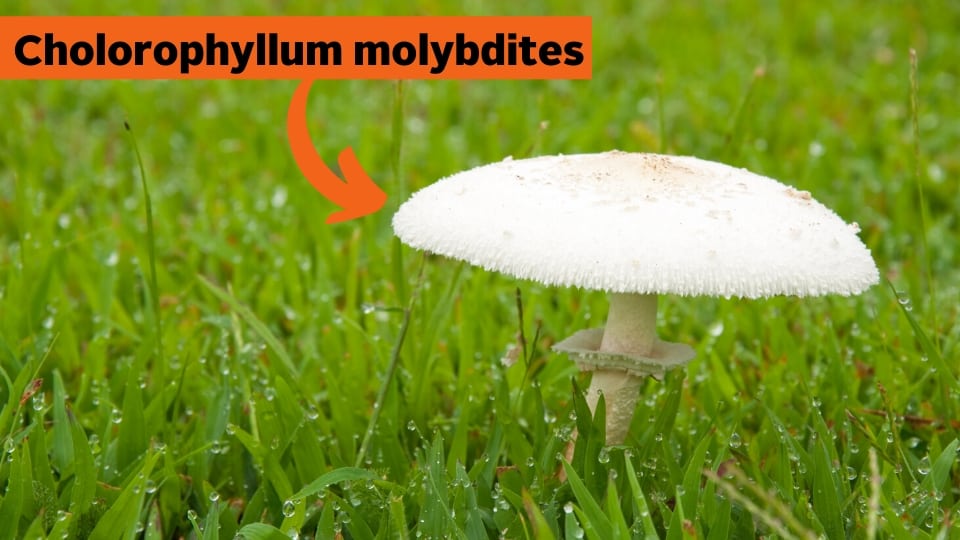
Can Shaggy Mane Be Cultivated?
Shaggy Mane can easily be cultivated, although it is not commonly cultivated in North America, mainly because there is not really a market for fresh or dried Shaggy Manes.
If you are interested, we did a video on growing Shaggy Mane which you can check out if interested.
Shaggy Mane is saprophytic and grows well on compost, but can also grow on wood like many other gourmet mushrooms.
In China, it is often grown in cooler temperatures on synthetic wood logs. The mushrooms are harvested, dried to prevent auto-digestion, and are sold in grocery stores.
Whether you grow it or find it in the wild, Shaggy Mane is an interesting and delicious gourmet mushroom that is worth learning about. I hope you learned something new, and as always if you have any questions be sure to ask them in the comments below.
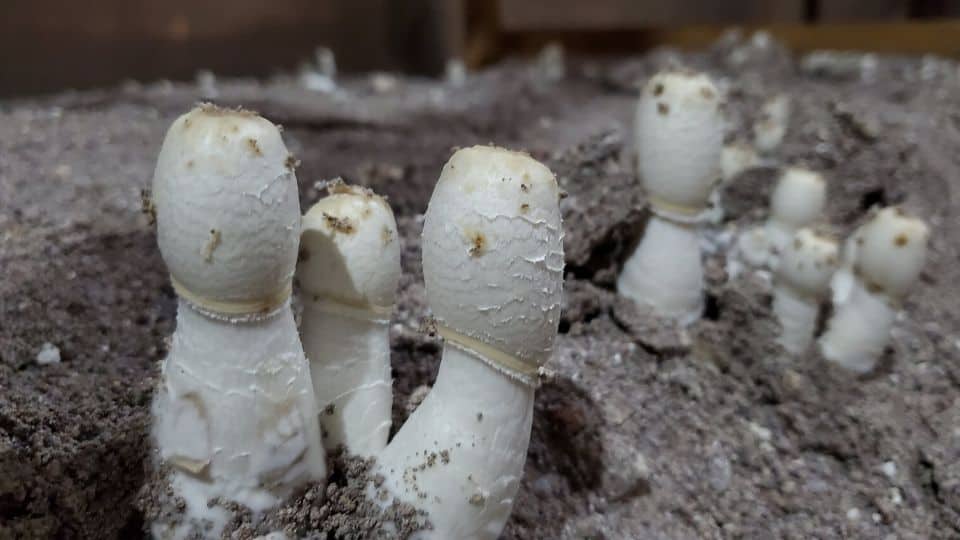
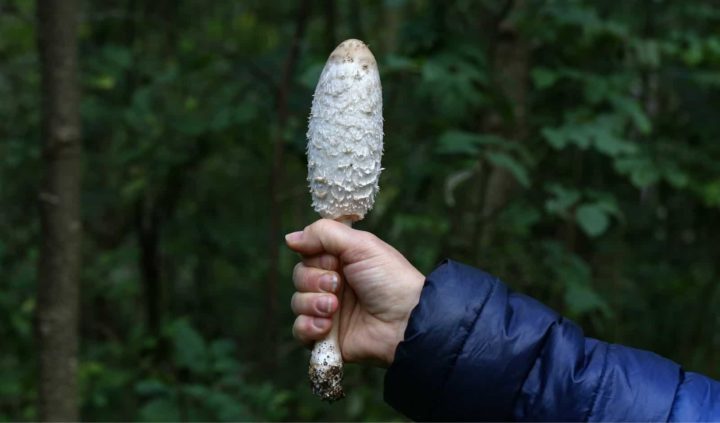
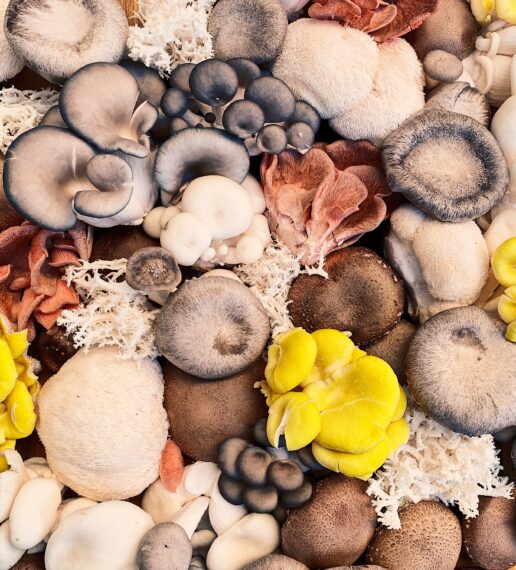

wonderful article Tony, my question is, I have just received shaggy mane starter kit but no instructions came with it, it looks like a little starter kit. can you help me out.
Mildred
Was surprised to find a bunch of mushrooms in my yard today… Found this site which helped me identify them. Sure enough, Shaggy Mane. Plucked a bunch, washed and sauteed in butter and garlic. Tasty snack!